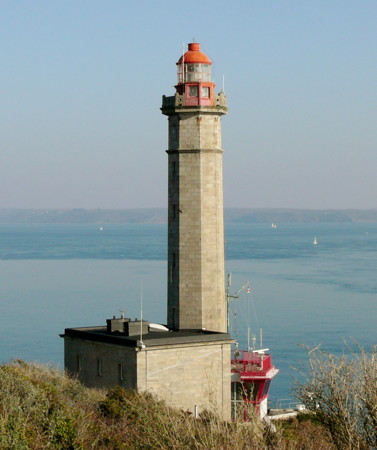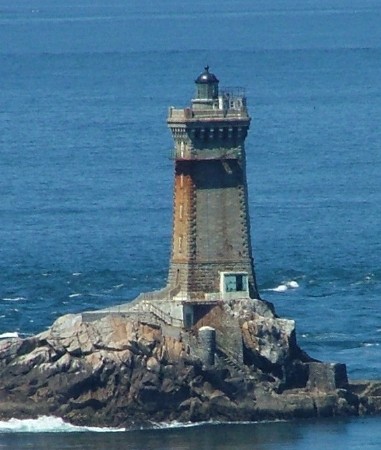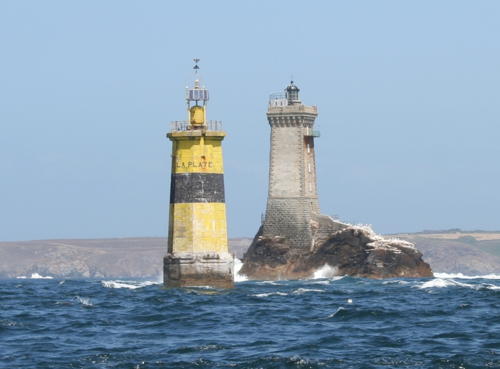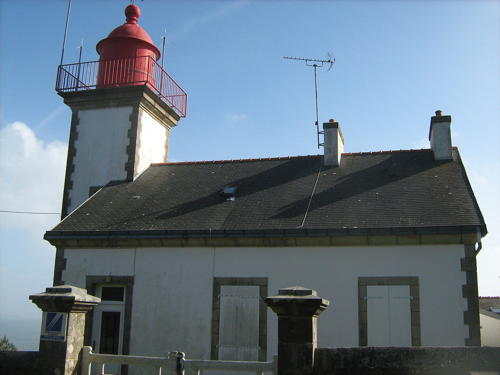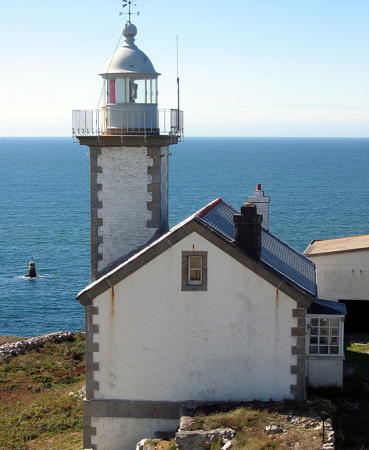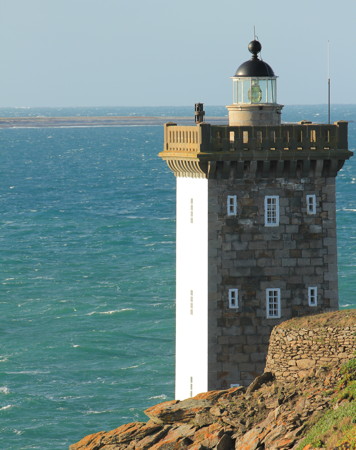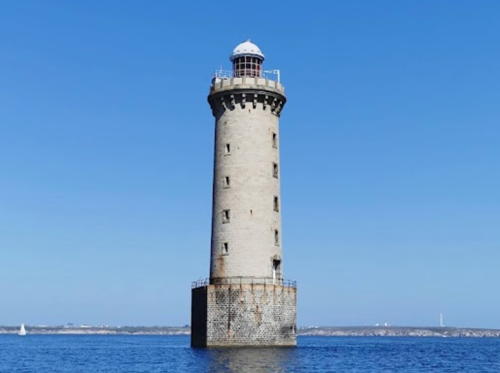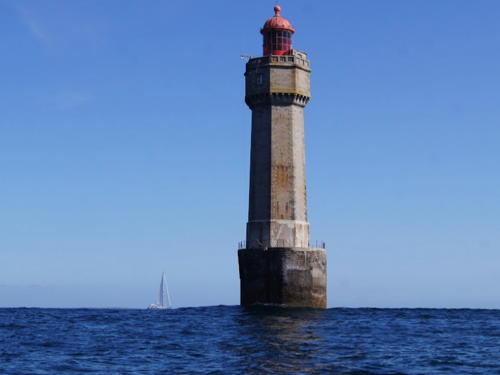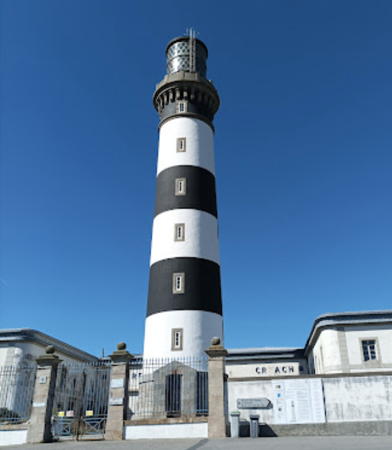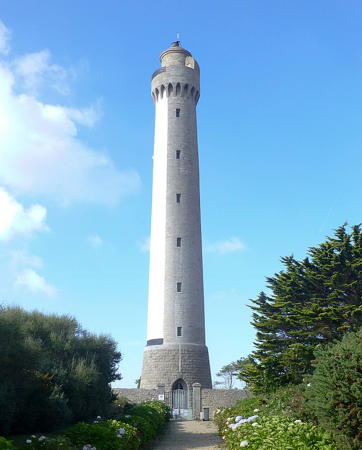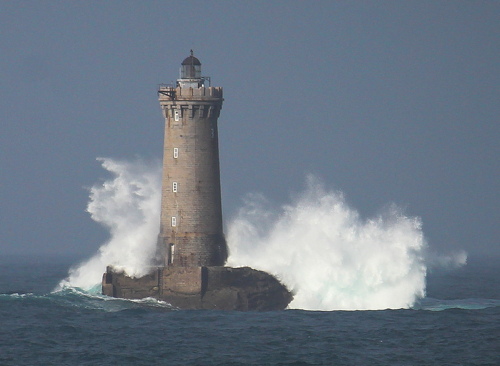France (officially the French Republic, République française) has coasts facing south on the Mediterranean Sea, west on the open Atlantic Ocean, and north on the English Channel (La Manche in French). Long a leader in lighthouse design, France has scores of famous and historic lighthouses. And it was a French engineer and physicist, Augustin-Jean Fresnel (1788-1837), who invented the powerful and beautiful lenses used in lighthouses around the world.
France's Département du Finistère (Department of the End of the World) occupies the rugged western end of the peninsula of Bretagne (Brittany), one of the 12 administrative regions (régions) of Mainland France. Its dangerous coastline is crowded with lighthouses, more than in any other region of France. So many, in fact, that the Directory needs three pages to cover them all. This page includes lighthouses in the western end of the département, west of Brest.
The Mer d'Iroise (Iroise Sea) is the turbulent basin of the Atlantic off the westernmost tip of France, between the Pointe du Raz and Île de Sein on the south and the Île d'Ouessant (Ushant) on the north. Subject to violent storms and huge waves, it is among the most dangerous seas of Europe. At its southern boundary the Pointe du Raz is a spectacular, razor-sharp point of rock projecting into the Atlantic. The same line of rocks continues under water for many miles as an extremely dangerous reef called the Chaussée de Sein. Lighting this infamous hazard required decades of effort and some remarkable engineering. Wikipedia has a map showing the reef and its lighthouses.
The French word for a lighthouse, phare, is often reserved for the larger coastal lighthouses; a smaller light or harbor light is called a feu (literally "fire," but here meaning "light") or a balise (beacon). The front light of a range (alignement) is the feu antérieur and the rear light is the feu postérieur. In French île is an island, cap is a cape, pointe is a promontory or point of land, roche is a rock, récife is a reef, baie is a bay, estuaire is an estuary or inlet, détroit is a strait, rivière is a river, and havre is a harbor. The Breton word for a lighthouse is tour-tan; enez is an island, and men is a rock or reef.
Aids to navigation in France are maintained by the Bureau des Phares et Balises, an agency of the Direction des Affaires Maritimes (Directorate of Maritime Affairs). The Directorate has four regional offices (called Directions Interrégionale de la Mer, or DIRM) at Le Havre, Nantes, Bordeaux, and Marseille. Lights in Brittany are managed by the DIRM Nord-Atlantique - Manche Ouest at Nantes.
ARLHS numbers are from the ARLHS World List of Lights. FR numbers are the French light list numbers, where known. Admiralty numbers are from volumes A and D of the Admiralty List of Lights & Fog Signals. U.S. NGA List numbers are from Publication 113.
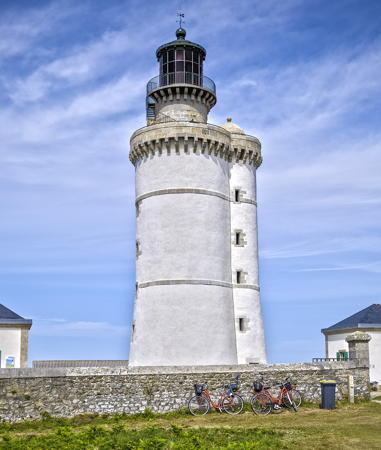
Le Stiff Light, Île d'Ouessant, August 2014
Wikimedia Creative Commons photo by Yann Caradec
